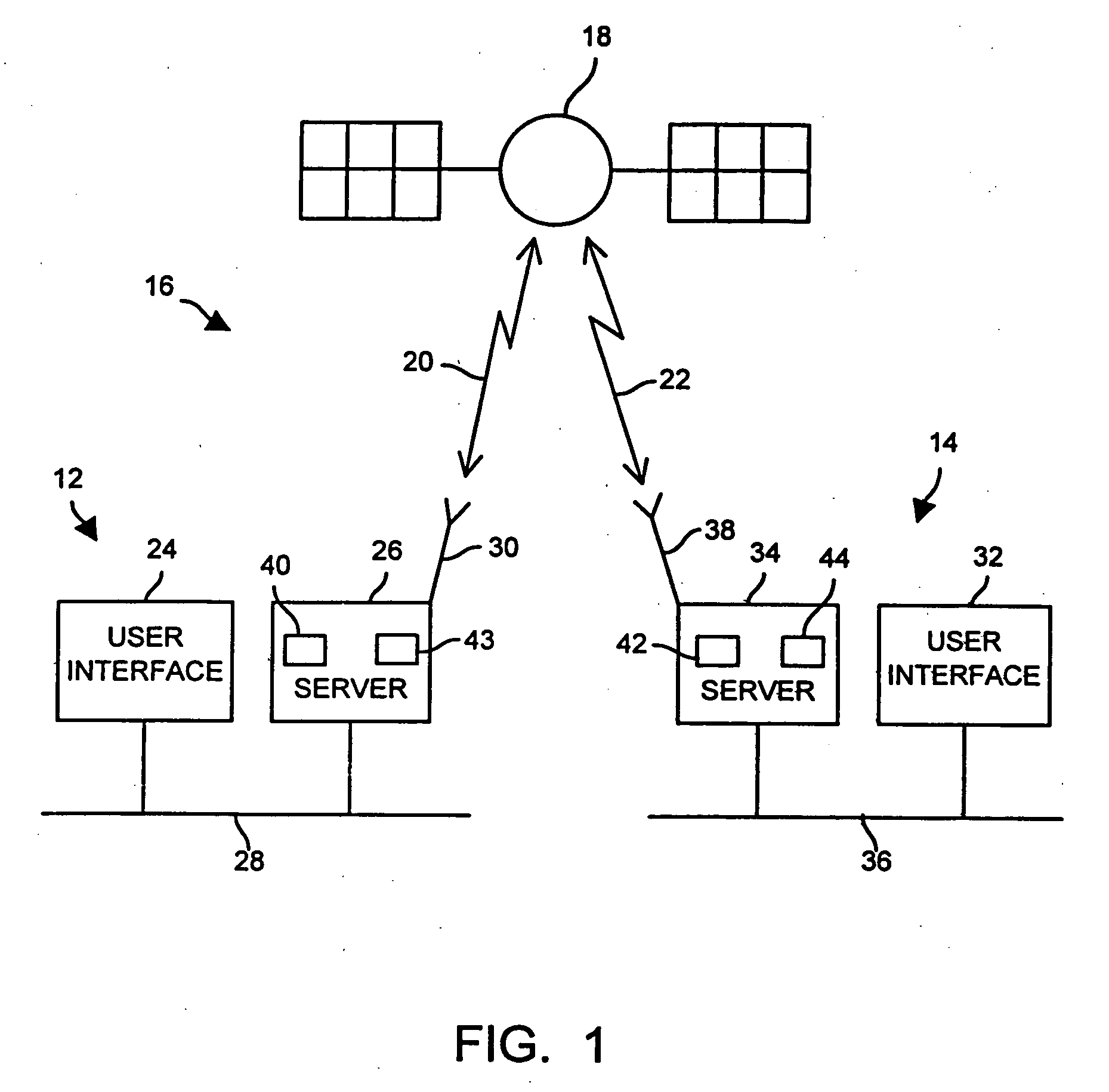Deferred acknowledgment communications and alarm management
a technology of acknowledgment and communication, applied in the field of communication systems, can solve the problems of significant cost per unit of data sent through the link, system designers using slow communication links, data corruption through the link, etc., and achieve the effect of minimizing the idle time of the communication link and efficient transmission
- Summary
- Abstract
- Description
- Claims
- Application Information
AI Technical Summary
Benefits of technology
Problems solved by technology
Method used
Image
Examples
Embodiment Construction
[0024] While a technique for transmitting information through a slow communication link is described in detail in conjunction with a satellite communication link having a transmission time delay, it should be noted that the communication technique described herein can be advantageously used as a low level communication protocol within a variety of communication systems, including, for example, low bandwidth systems that use modems, wireless cellular, wide area networks such as the Internet, etc., and higher level applications such as process control reporting, alarming, etc. that are layered over the communication systems. Furthermore, while described as being used in a process control system, the communication techniques described herein can be advantageously used in any other communication system that transmits data over a slow communication link.
[0025] Before discussing the deferred acknowledgment communication technique in greater detail, it is important to recognize that the c...
PUM
 Login to View More
Login to View More Abstract
Description
Claims
Application Information
 Login to View More
Login to View More - R&D
- Intellectual Property
- Life Sciences
- Materials
- Tech Scout
- Unparalleled Data Quality
- Higher Quality Content
- 60% Fewer Hallucinations
Browse by: Latest US Patents, China's latest patents, Technical Efficacy Thesaurus, Application Domain, Technology Topic, Popular Technical Reports.
© 2025 PatSnap. All rights reserved.Legal|Privacy policy|Modern Slavery Act Transparency Statement|Sitemap|About US| Contact US: help@patsnap.com



